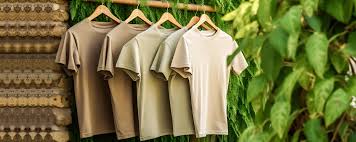Introduction
Fashion and technology are converging like never before, with wearable technology and smart fabrics leading the charge in 2024. The integration of tech into clothing and accessories is not only enhancing functionality but also redefining style and user experience. This article explores the latest innovations in wearable technology and smart fabrics, their impact on fashion, and the potential future developments in this dynamic field.
1. Wearable Technology: Beyond the Basics
- Smartwatches and Fitness Trackers
Smartwatches and fitness trackers continue to evolve, offering more advanced features and greater integration with other smart devices. Models like the Apple Watch Series 9 and the Garmin Venu 3 are equipped with enhanced sensors for health monitoring, including ECG, blood oxygen levels, and stress tracking. These devices now support more in-depth health insights and personalized recommendations, making them indispensable tools for health-conscious consumers.
- Augmented Reality (AR) Glasses
AR glasses are making significant strides in 2024, offering new ways to interact with digital content while on the move. Brands like Apple and Microsoft are at the forefront of this technology with products such as the Apple Vision Pro and HoloLens 3. These devices overlay digital information onto the real world, providing immersive experiences for gaming, navigation, and productivity. AR glasses are also being integrated into fashion, with designers creating stylish yet functional eyewear that blends technology seamlessly with aesthetics.
2. Smart Fabrics: Revolutionizing Textile Design
- Adaptive Textiles
Adaptive textiles are revolutionizing how clothing interacts with the environment and the wearer. Fabrics that adjust to temperature changes, such as those used in jackets and activewear, are becoming more common. Companies like Ministry of Supply and Sensoria are developing garments with built-in sensors and actuators that modify their properties based on environmental conditions. These smart fabrics can regulate temperature, wick away moisture, and even change color or pattern in response to external stimuli.
- Health-Monitoring Fabrics
Health-monitoring fabrics are an emerging trend in smart textiles, designed to track physiological data in real-time. Innovations such as smart shirts with embedded biosensors or leggings that monitor muscle activity and posture are gaining traction. For example, companies like Hexoskin and Athos are creating garments that measure metrics like heart rate, respiratory rate, and muscle exertion, providing valuable data for athletes and health-conscious individuals. These fabrics offer a non-intrusive way to monitor health and improve performance.
3. Fashion Meets Function: Innovative Applications
- Interactive Clothing
Interactive clothing is blurring the lines between fashion and technology, allowing garments to respond to user input and environmental conditions. Examples include jackets with built-in LED lights that can display messages or patterns, and dresses that change color based on the wearer’s mood or the surrounding environment. Designers like Anouk Wipprecht and Studio Roosegaarde are leading the way in creating interactive fashion that combines aesthetics with cutting-edge technology.
- Tech-Enhanced Accessories
Accessories are also benefiting from technological advancements, with smart jewelry and connected bags becoming increasingly popular. Smart rings with health tracking capabilities, such as those from Oura and Motiv, and bags with integrated charging ports and GPS tracking are enhancing the functionality of everyday items. These tech-enhanced accessories offer convenience and security while complementing the user’s style.
4. Challenges and Considerations
- Sustainability and Environmental Impact
The integration of technology into fashion raises concerns about sustainability and environmental impact. The production of electronic components and smart textiles can contribute to environmental degradation and electronic waste. To address these issues, brands are exploring eco-friendly materials and sustainable manufacturing practices. Companies like Pangaia and Stella McCartney are pioneering efforts to reduce the environmental footprint of tech-infused fashion by using recycled materials and adopting circular design principles.
- Privacy and Data Security
Wearable technology and smart fabrics often collect and transmit personal data, raising concerns about privacy and data security. Ensuring that data collected by wearable devices and smart textiles is securely stored and transmitted is crucial for maintaining user trust. Brands and manufacturers must adhere to stringent data protection regulations and implement robust security measures to safeguard users’ personal information.
5. The Future of Tech-Infused Fashion
- Integration with the Metaverse
As the metaverse continues to develop, tech-infused fashion is expected to play a significant role in virtual environments. Digital fashion, including virtual clothing and accessories, will become increasingly prevalent as users seek to express their identities in virtual spaces. Brands are already exploring ways to create digital fashion items that can be worn in virtual worlds, offering new opportunities for self-expression and creativity.
- Advancements in Textile Technology
Future advancements in textile technology will likely lead to even more innovative applications of smart fabrics and wearable technology. Research into new materials, such as conductive fibers and self-healing fabrics, will expand the possibilities for tech-infused fashion. As technology continues to evolve, the integration of smart textiles and wearable devices into everyday clothing will become more seamless and sophisticated.
Conclusion
In 2024, the intersection of technology and fashion is creating exciting opportunities for innovation and self-expression. Wearable technology and smart fabrics are enhancing functionality, health monitoring, and interactive experiences, while also presenting challenges related to sustainability and data security. As tech-infused fashion continues to evolve, the future promises even greater integration of technology into clothing and accessories, offering new ways for individuals to interact with their environment and express their personal style.

